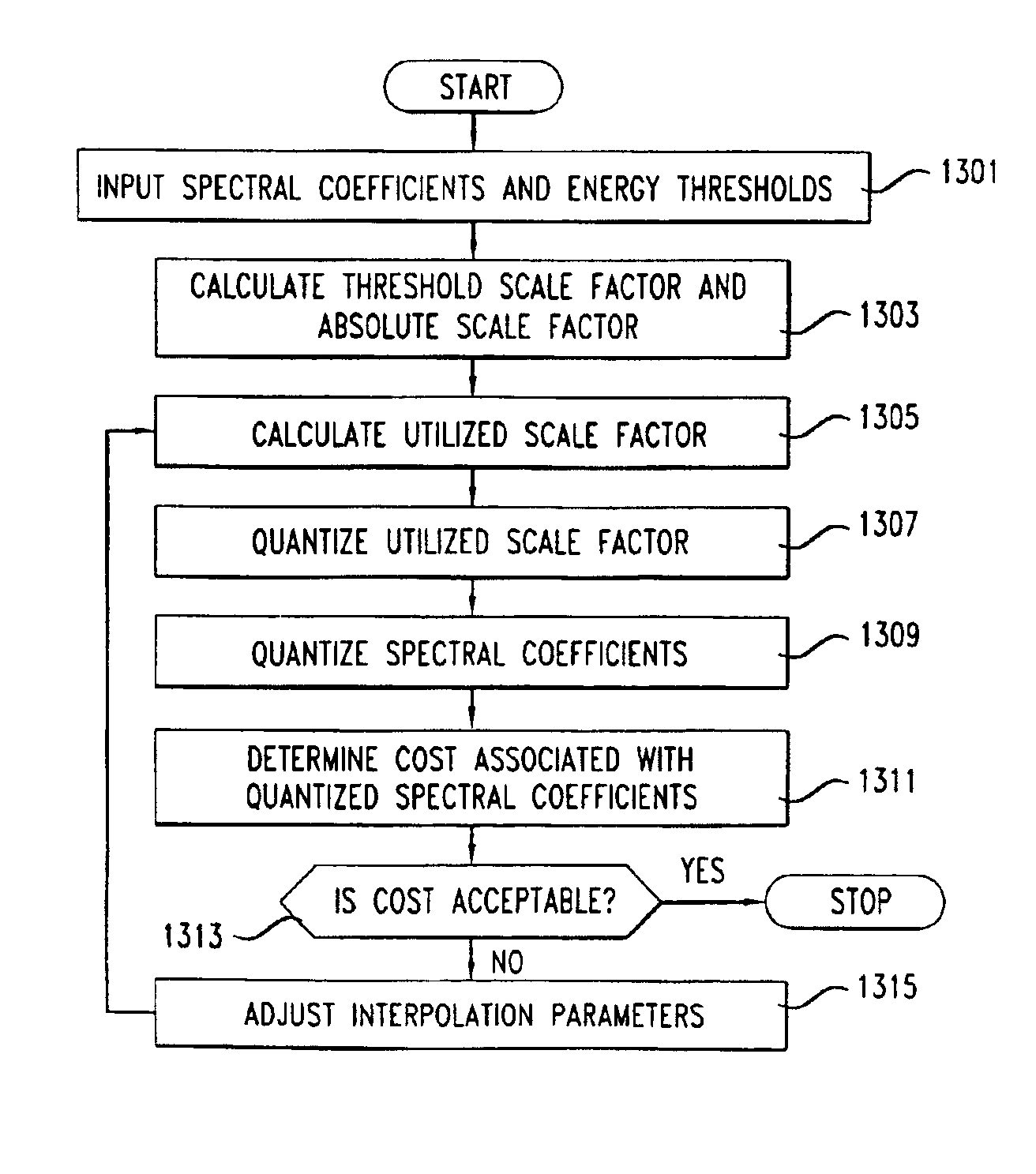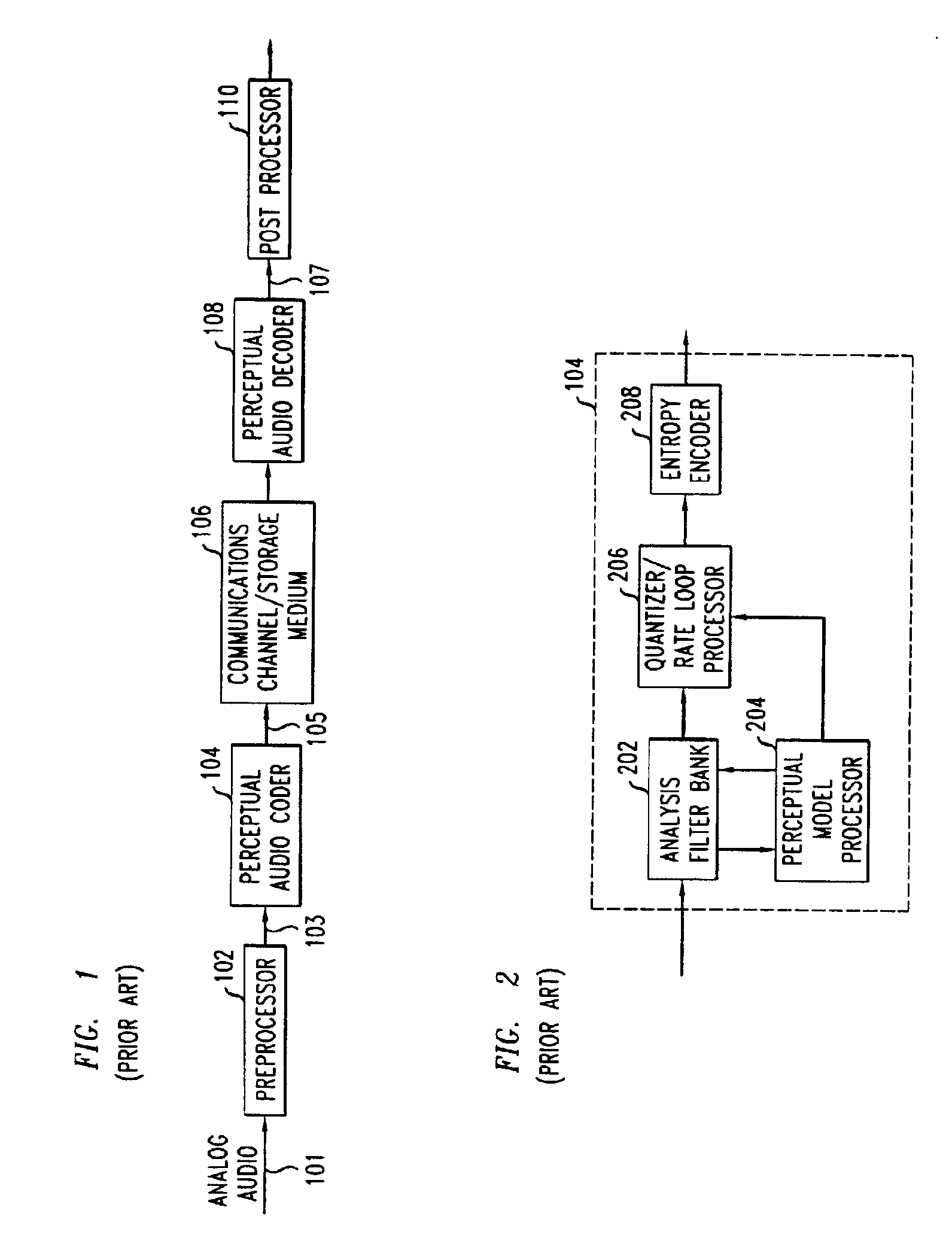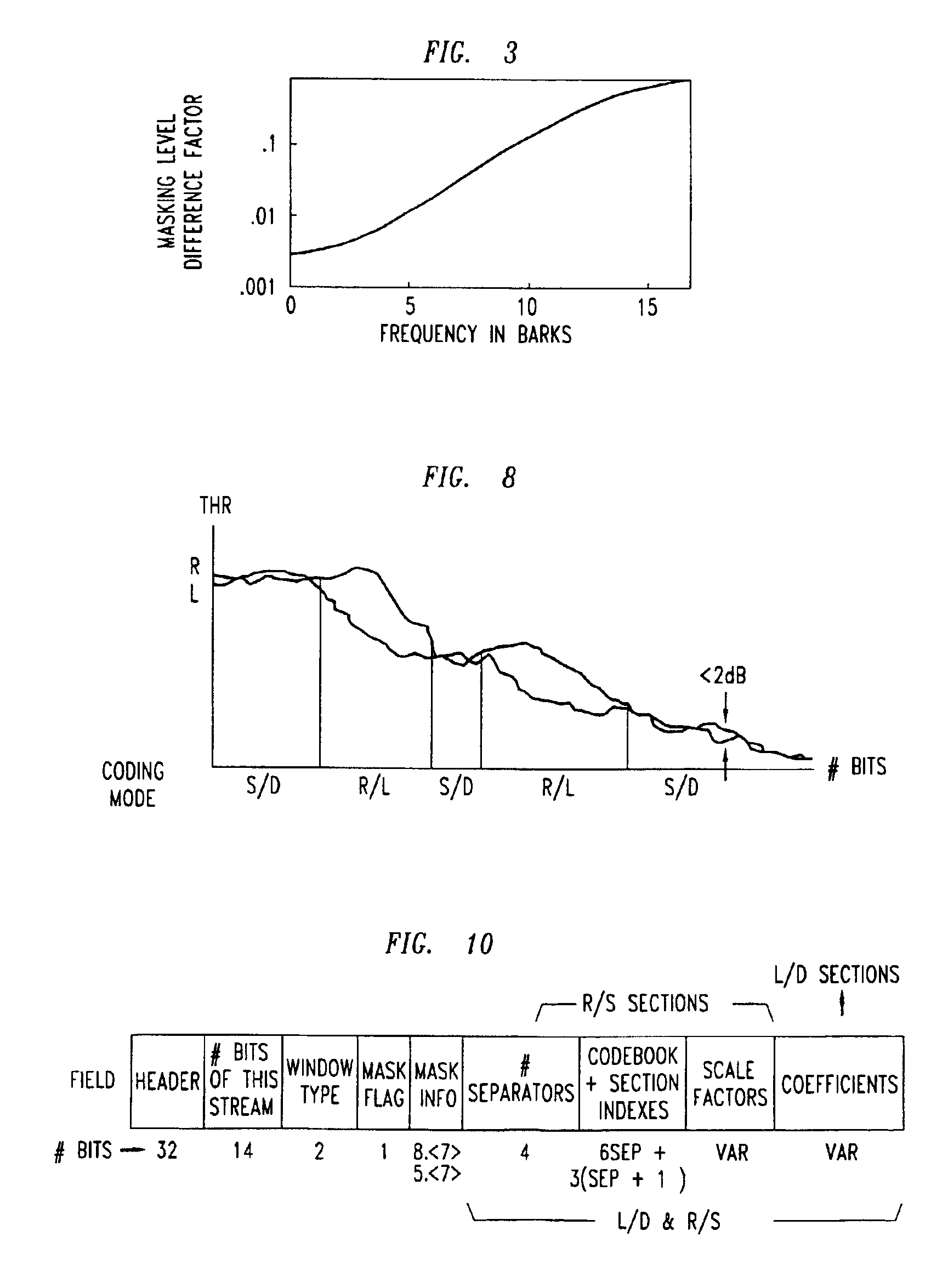Rate loop processor for perceptual encoder/decoder
a perceptual encoder and loop processor technology, applied in the field of signal processing, can solve the problems of affecting the quality of audio signals, so as to achieve enhanced compression, detect and avoid binaural artifacts, and improve audio quality. the effect of quality
- Summary
- Abstract
- Description
- Claims
- Application Information
AI Technical Summary
Benefits of technology
Problems solved by technology
Method used
Image
Examples
Embodiment Construction
1. Overview
[0034]To simplify the present disclosure, the following patents, patent applications and publications are hereby incorporated by reference in the present disclosure as if fully set forth herein: U.S. Pat. No. 5,040,217, issued Aug. 13, 1991 by K. Brandenburg et al, U.S. patent application Ser. No. 07 / 292,598, entitled Perceptual Coding of Audio Signals, filed Dec. 30, 1988; J. D. Johnston, Transform Coding of Audio Signals Using Perceptual Noise Criteria, IEEE Journal on Selected Areas in Communications, Vol. 6, No. 2 February 1988); International Patent Application (PCT) WO 88 / 01811, filed Mar. 10, 1988; U.S. patent application Ser. No. 07 / 491,373, entitled Hybrid Perceptual Coding, filed Mar. 9, 1990, Brandenburg et al, Aspec: Adaptive Spectral Entropy Coding of High Quality Music Signals, AES 90th Convention (1991); Johnston, J., Estimation of Perceptual Entropy Using Noise Masking Criteria, ICASSP, (1988); J. D. Johnston, Perceptual Transform Coding of Wideband Stereo...
PUM
 Login to View More
Login to View More Abstract
Description
Claims
Application Information
 Login to View More
Login to View More - R&D
- Intellectual Property
- Life Sciences
- Materials
- Tech Scout
- Unparalleled Data Quality
- Higher Quality Content
- 60% Fewer Hallucinations
Browse by: Latest US Patents, China's latest patents, Technical Efficacy Thesaurus, Application Domain, Technology Topic, Popular Technical Reports.
© 2025 PatSnap. All rights reserved.Legal|Privacy policy|Modern Slavery Act Transparency Statement|Sitemap|About US| Contact US: help@patsnap.com



